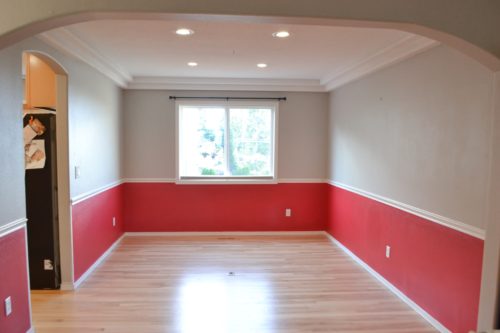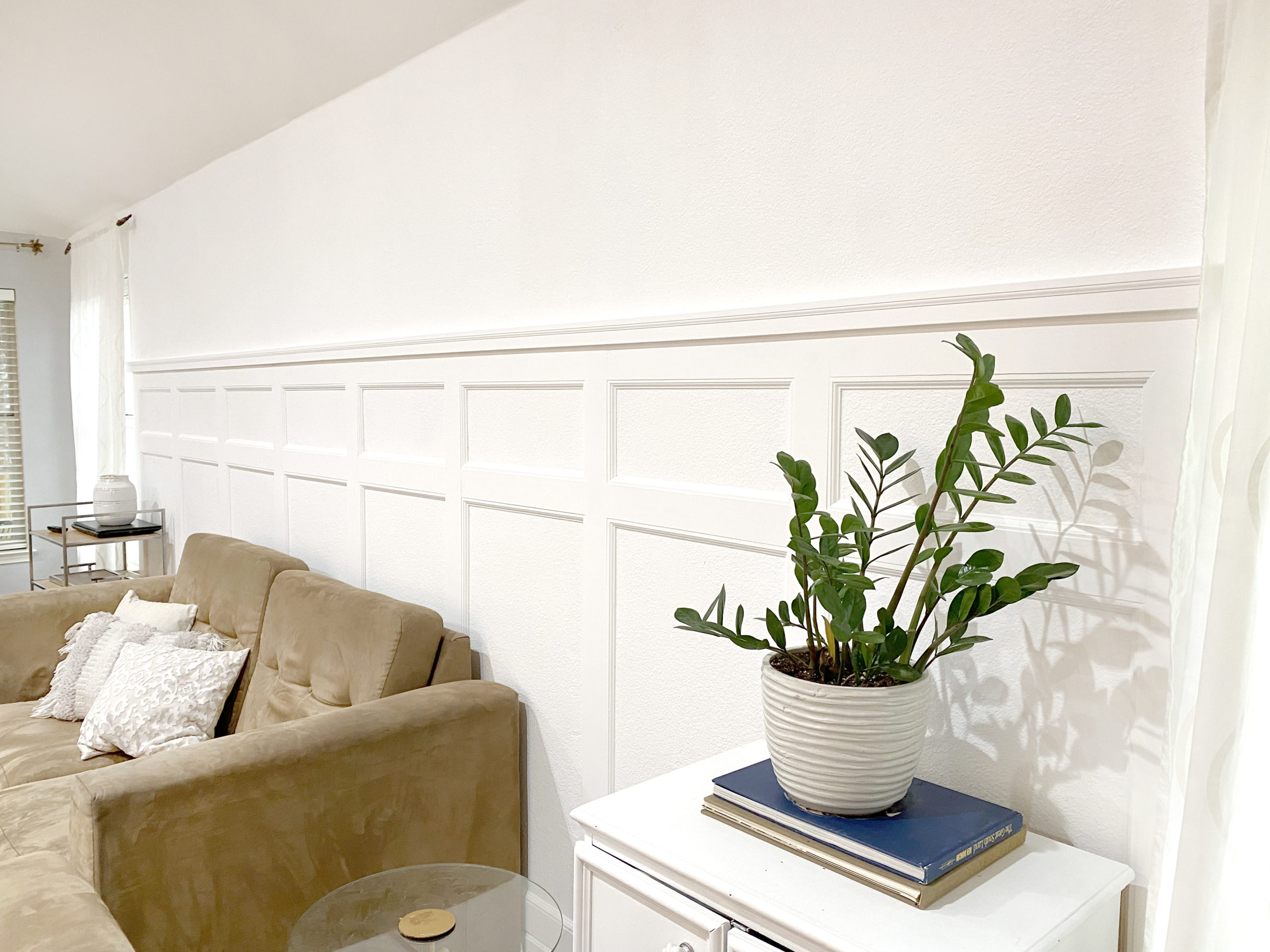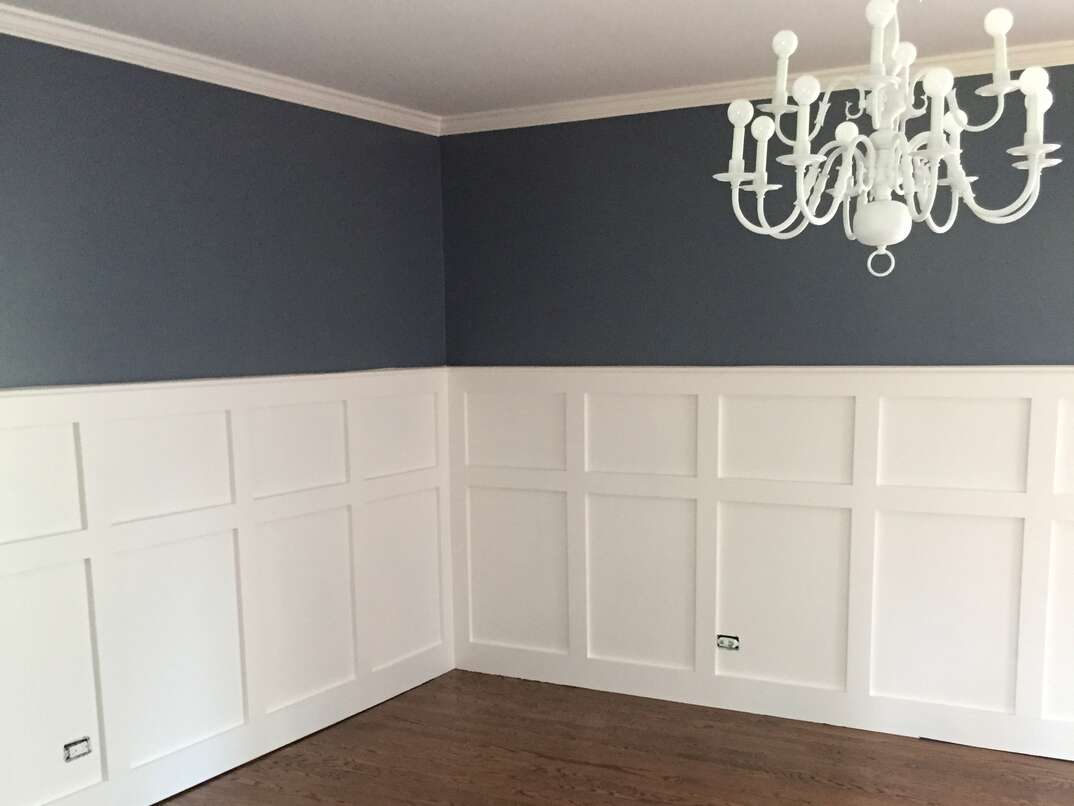Wainscoting is a great way to add character and charm to your dining room. Not only does it add visual interest, but it also helps protect your walls from damage. If you're looking to enhance your dining room with wainscoting, but don't want to break the bank, then a DIY project might be the perfect solution. Here are some creative ideas to help you get started.DIY Wainscoting Ideas for Your Dining Room
Installing wainscoting may seem like a daunting task, but with the right tools and some basic carpentry skills, it can be a manageable DIY project. The first step is to measure the walls in your dining room and determine the amount of wainscoting panels needed. Next, gather your materials, including panels, trim, adhesive, and a level. Follow a step-by-step guide to ensure a smooth and successful installation.How to Install Wainscoting in Your Dining Room
If you're ready to tackle a DIY wainscoting project in your dining room, here is a step-by-step guide to help you along the way: Step 1: Measure and mark the wall for panel placement, ensuring that they are evenly spaced and level. Step 2: Cut panels to the appropriate size using a saw or jigsaw. Step 3: Apply adhesive to the back of the panel and press firmly onto the wall. Step 4: Secure panels with nails or a nail gun. Step 5: Repeat this process for the remaining walls. Step 6: Install trim around the edges of the panels and along the baseboard. Step 7: Fill any gaps or holes with wood filler and sand down for a smooth finish. Step 8: Paint or stain the wainscoting to your desired color.Step-by-Step Guide to DIY Wainscoting in Your Dining Room
There are many different styles of wainscoting to choose from, each with its own unique charm. Some popular styles for dining rooms include raised panel, flat panel, board and batten, and beadboard. Consider the overall aesthetic of your dining room and choose a style that complements it. Don't be afraid to mix and match styles for a more eclectic look.Wainscoting Styles for Your Dining Room
Wainscoting can be a cost-effective way to upgrade your dining room, but it can also add up quickly if you're not careful. To keep costs down, consider using budget-friendly materials such as MDF or plywood instead of solid wood. You can also save money by choosing a simpler style and installing the wainscoting yourself.DIY Wainscoting on a Budget for Your Dining Room
When it comes to wainscoting, there are various materials you can choose from, such as wood, MDF, PVC, and even wallpaper. Each material has its own pros and cons, so it's essential to consider factors such as durability, cost, and maintenance before making a decision.Wainscoting Materials for Your Dining Room
While a DIY wainscoting project can be a fun and rewarding experience, it may not be the best option for everyone. If you don't have the time or skills to take on a DIY project, it might be worth considering hiring a professional. They have the necessary expertise and tools to ensure a high-quality and efficient installation.DIY Wainscoting vs Hiring a Professional for Your Dining Room
The color of your wainscoting can have a significant impact on the overall look and feel of your dining room. For a classic and timeless look, opt for white or off-white paint. If you want to make a statement, consider a bold color or a rich wood stain. You can also play around with contrasting colors and patterns for a more unique and modern look.Wainscoting Color Ideas for Your Dining Room
The height of your wainscoting can vary depending on personal preference and the style of your dining room. A general rule of thumb is to install it at about one-third of the wall's height. You can also choose to have it go all the way up to the ceiling for a more dramatic effect. As for placement, wainscoting is typically installed in the lower half of the wall, but there are no set rules, so feel free to get creative.Wainscoting Height and Placement for Your Dining Room
Before you start your DIY wainscoting project, here are a few tips and tricks to keep in mind: Tip 1: Use a level and measuring tape to ensure precise and even panel placement. Tip 2: Sand down the panels before installation for a smoother finish. Tip 3: Use a nail gun for a stronger and more secure hold. Tip 4: Apply a coat of primer before painting to help the color adhere better. Tip 5: Don't be afraid to experiment with different styles and colors to find the perfect fit for your dining room. In conclusion, DIY wainscoting is a fantastic way to add character, texture, and charm to your dining room. With these ideas, tips, and tricks, you can create a beautiful and unique space that reflects your personal style and creativity. So grab your tools and get ready to transform your dining room with this fun and budget-friendly project.DIY Wainscoting Tips and Tricks for Your Dining Room
The Benefits of DIY Wainscoting in Your Dining Room

Enhance the Aesthetic Appeal of Your Dining Room
 Wainscoting is a type of decorative paneling that is installed on the lower half of a wall, typically in dining rooms, hallways, and entryways. It adds a touch of elegance and sophistication to any space, and can easily elevate the overall design of your dining room. By opting for a DIY wainscoting project, you have the freedom to choose the style, color, and material that best suits your personal taste and complements your existing decor. This allows you to create a unique and personalized look for your dining room, making it stand out from other rooms in your home.
DIY wainscoting
is also a cost-effective option compared to hiring a professional to install it for you. By doing it yourself, you can save money on labor costs and choose more budget-friendly materials, without compromising on the overall look and quality of your wainscoting. Plus, the sense of accomplishment that comes with completing a home project on your own is priceless.
Wainscoting is a type of decorative paneling that is installed on the lower half of a wall, typically in dining rooms, hallways, and entryways. It adds a touch of elegance and sophistication to any space, and can easily elevate the overall design of your dining room. By opting for a DIY wainscoting project, you have the freedom to choose the style, color, and material that best suits your personal taste and complements your existing decor. This allows you to create a unique and personalized look for your dining room, making it stand out from other rooms in your home.
DIY wainscoting
is also a cost-effective option compared to hiring a professional to install it for you. By doing it yourself, you can save money on labor costs and choose more budget-friendly materials, without compromising on the overall look and quality of your wainscoting. Plus, the sense of accomplishment that comes with completing a home project on your own is priceless.
Add Dimension and Depth to Your Space
 One of the main benefits of wainscoting is that it adds visual interest and depth to your dining room. By breaking up the monotony of a plain wall, wainscoting creates texture and adds architectural interest to the room. This is especially helpful in smaller dining rooms, as the paneling can make the space feel larger and more open. Additionally,
DIY wainscoting
allows you to customize the height and width of the paneling to best suit your space, making it look like it was professionally designed for your unique dining room.
One of the main benefits of wainscoting is that it adds visual interest and depth to your dining room. By breaking up the monotony of a plain wall, wainscoting creates texture and adds architectural interest to the room. This is especially helpful in smaller dining rooms, as the paneling can make the space feel larger and more open. Additionally,
DIY wainscoting
allows you to customize the height and width of the paneling to best suit your space, making it look like it was professionally designed for your unique dining room.
Protect Your Walls and Add Insulation
 Aside from its aesthetic benefits, wainscoting also serves a practical purpose. It acts as a protective barrier for your walls, preventing dents and scratches from furniture or accidental bumps. This is especially useful in high-traffic areas such as dining rooms where chairs and tables are constantly being moved around. Wainscoting also adds an extra layer of insulation to your walls, helping to regulate temperature and reduce noise levels in your dining room.
In conclusion,
DIY wainscoting
is a great way to enhance the design of your dining room while also providing practical benefits. Whether you're looking to add dimension and depth to your space, protect your walls, or simply add a touch of elegance, wainscoting is a versatile option that can be easily achieved through a DIY project. With the right materials and a little bit of creativity, you can transform your dining room into a stunning and functional space that you can be proud of.
Aside from its aesthetic benefits, wainscoting also serves a practical purpose. It acts as a protective barrier for your walls, preventing dents and scratches from furniture or accidental bumps. This is especially useful in high-traffic areas such as dining rooms where chairs and tables are constantly being moved around. Wainscoting also adds an extra layer of insulation to your walls, helping to regulate temperature and reduce noise levels in your dining room.
In conclusion,
DIY wainscoting
is a great way to enhance the design of your dining room while also providing practical benefits. Whether you're looking to add dimension and depth to your space, protect your walls, or simply add a touch of elegance, wainscoting is a versatile option that can be easily achieved through a DIY project. With the right materials and a little bit of creativity, you can transform your dining room into a stunning and functional space that you can be proud of.
















































































